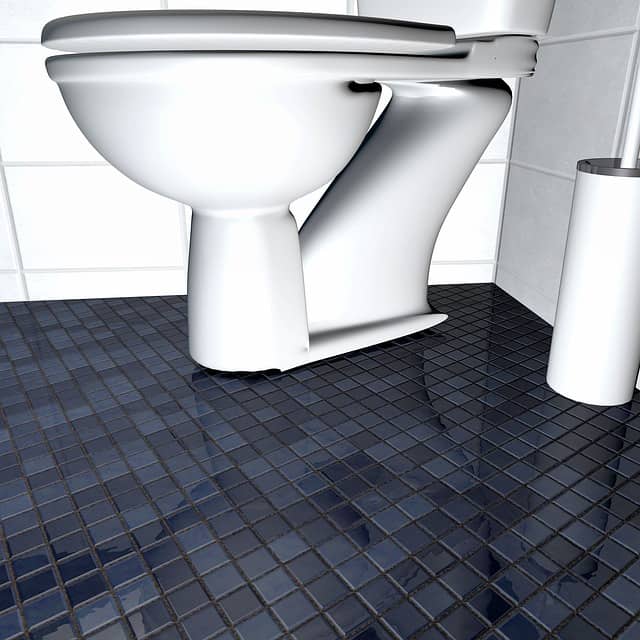If you’re deciding on whether you should purchase and install a tankless water heater or not, knowing what maintenance tips are required will help with that decision. If you already own a tankless water heater then understanding how to care for it is also very important and that’s what I’ll be covering in this article.
Tankless water heaters do require regular maintenance. The maintenance required involves removing lime scale and other minerals from the water heaters burner system. How often you clean out your tankless water heater will depend upon how much hot water is used as well as the hardness of your water. The size of your family and the minerals in your supplied water also factor into tankless water heater maintenance.
If you have a water softener installed, this will lessen how often you need to do maintenance. If you’re drawing water from a well or aquifer, chances are your water is overly heavy in minerals and this means maintenance is required more often. Regardless of your situation, you should plan to clean out your water heater every 6 months to a year at first to see how much build up there is.
You might be able to go up to 2 years or more, depending on the different factors I have mentioned already such as hardness of water supplied, the size of your family and whether you have a water softener installed. Before we get into how to descale your own tankless water heater, I think it’s important to quickly cover whether you can (or should).
Can you Flush Your Own Tankless Water Heater?
Can you flush your own tankless water heater? Yes, you can flush and descale your own tankless water heater.
The skill and knowledge level required is just above the easy mark. You should understand how to properly turn off the power and/or gas supply as well as how to turn off (and on) water lines.
That’s it, it’s quite easy to get this job done. You don’t need a special plumbing license or designation – just the awareness that a water heater needs maintenance occasionally.
What Causes Tankless Water Heaters to Need to be Descaled?
One more lesson for you before we go over the steps to descale your water heater unit. Let’s quickly go over why your water heater needs to be maintained. Some units have a LED screen and will tell you when your water heater needs to be serviced. As good as that is, I’d still schedule regular maintenance just to be safe and maximize the efficiency of your unit.
Tankless water heaters need to be maintained because water has minerals. When the heater heats the water, some of the minerals get separated. This means that the harder your water is, the higher the mineral content and the more minerals that get separated.
The minerals that get separated in a tankless water heater collect on the burners as well the aerators of the faucet. If your faucet gets clogged up with minerals, then the water pressure is reduced. That’s why I don’t solely rely on a LED screen reading. The water temperature (and possibly the pressure) starts to diminish well before you get notified to clean the unit.
This is different from a tank style water heater as the separated minerals accumulate at the bottom of the tank. Water pressure is never an issue for a tank style heater. The problem with these water heaters is the bottom of the tank usually corrodes and leaks causing the unit to need to be replaced.
That said, if you’re ready, then it’s time to get right into it. Let’s go over the steps to descale your tankless water heater.

How to Descale a Tankless Water Heater Yourself
Next up, I’ll explain what you need to accomplish the task of descaling your tankless water heater, which means you’re cleaning mineral deposits off the burners inside the unit.
Before we get started, here’s what you need to get the job done.
- A small sump pump (also called a utility pump) that has a male hose bib end (or adaptors) that a garden hose or washer hose can be attached to.
- Two long washer water connection hoses.
- A large pail. A minimum of 5-gallons. You could even use a large plastic garbage can which you might have available in the garage.
- A container of tankless water heater descaler or 1 to 3 gallons of cleaning vinegar. If you only have regular vinegar, that’ll work as well.
- Lastly, you’ll need a tool like channel locks or pliers to tighten the water hoses.
***To make this job easier, you can purchase descaling kits at your local home builder type store such as Lowes or Home Depot. Or, if you have a couple days, you can conveniently order a descaling kit right from Amazon. Here are some great options to choose from. ***
Now that you have your descaling supplies, here’s how to properly flush a tankless water heater in 12 easy steps.
Step 1: Locate your tankless water heater and remove the cover over the flush kit valves – if there’s a cover. Some (maybe most) units have the flush kit valves exposed at the bottom side of the tank.
If you don’t have valves at the bottom of the tank where the water goes in and out of the unit, you’re going to have to stop here and get a plumber to install bypass (also called isolation valves) valves. If you’re able to do this yourself, then even better. Once this is done, you can move on to the next step.
Step 2: The next step is to turn off the gas supply – if your unit runs on gas. Find the gas valve and turn it perpendicular to the gas line. You can leave the power on to the thermostat if you prefer or if you just want to make sure nothing goes wrong, then turn it off. It’s not necessary to do so, though.
Step 3: Shut off both cold and hot water isolation valves. I called them bypass valves above as the term is interchangeable.
When you have these valves turned off, you’re stopping cold water from your water lines from flowing into the water heater and stopping any water inside the water heater from flowing out into the homes hot water lines. You have bypassed or isolated the water heater from the home’s water lines.
Step 4: Open the flush valves. These valves are connected to the same valve where you turned off the water supply to and from the unit. You’ll find that there’s some water still in the water heater. If you can capture some of that water in your pail, you can use it for flushing. It’s not necessary to capture that water, however.
Step 5: Attach the washer hoses to the flush valves. Now using a pair of channel locks or pliers, tighten up the hoses onto the flush valves. If there are any plastic caps (purge port caps) on the valves, make sure to remove them first.
Step 6: Connect the utility pump to the hose that is connected to the cold-water valve of the water heater. It’s important to have the pump connected to the cold-water side of the water heater as you want the water to be able to be drawn from the pail and forced into the heater to clean it.
Step 7: Set the utility pump into the pail. Then, empty the descaler or cleaning vinegar into the pail. While you’re at it, make sure the hose that’s connected to the hot water side of the heater is placed into the pail as well. You want to make sure the water goes back into the pail after it has gone through the unit.
Step 8: Flush the tankless water heater. Ensure the flush valves are properly opened and then turn on the utility pump. Keep the pump running for the desired times I have listed below.
If you’re using a descaler, the process should only take approximately 30 minutes. If you’re using a vinegar solution, let it run for at least 1 hour.
Once you’re done running a descaler or vinegar through the heater, you can turn off the pump and empty out the pail.
Refill the pail with a gallon or more of clean water and turn the pump back on. Let it run for 10 minutes or so. This will help to remove any loose bits of sediment that are still in the heater.
Step 9: Remove Hoses and Resetting the Flush Valves. Now that you have finished flushing the water heater, you can remove the hoses and shut off the flush valves. Make sure to put the purge port caps back on that you took off in step 5.
Step 10: Cleaning the sediment filter. There’s one more thing to clean out before you are done. Just above the cold-water inlet valve there’s a filter. It can be labeled water inlet or yours might say filter.
Regardless of what your unit says, it should be obvious. Just unscrew the filter. Rinse it out and replace.
Step 11: Turning the system’s water back on: You’re almost done. The second-last thing to do is open the cold supply and hot water out valves.
You’ll notice there is some air in the hot water out line. Just turn on a faucet somewhere in your home to bleed the air through.
Step 12: Turn the tankless water heater’s gas back on. Now you can turn the gas supply back on. You should notice a bit of improvement in how fast your water heater delivers hot water compared to before cleaning it.
That’s all you need to do to descale a tankless water heater. The whole process shouldn’t take more than 90 minutes to 2 hours. I know some will instruct you to flush longer than I have, however I don’t feel that is necessary if you’re regularly maintaining your water heater.
How Much Does a Plumber Charge to Descale a Tankless Water Heater?
A plumber will cost approximately $300 to $500 to descale a tankless water heater. If you use a water heater company, the service fee might be a bit lower than using a plumber to do the job.
As you can see by my instructions above, the skill level needed to flush and descale a tankless water heater is “easy”. This means anyone with the supplies needed should be able to do this.
There really isn’t much you can do to damage your water heater so why not give it a try and save yourself quite a bit of money?
Are Tankless Water Heaters Worth it?
If you need to replace a storage tank style water heater, in my opinion yes, it’s worth investing in a tankless model. Tankless heaters are more expensive to purchase than tank style water heaters however, they’ll save you money every year as they are more efficient.
Since tankless heaters only use gas to heat water on demand, you can expect to save upwards of 35% on gas charges compared to a tank style unit.
Not to mention, a tankless model can last up to 20 years and possibly more, depending on the maintenance it receives. Tank style heaters will not last more than 10 years if you’re lucky to get 5 to 8 out of one.
If you know you won’t be in your home for more than 2 to 3 years, then I probably wouldn’t invest in one. If you have no plans of moving any time soon, I’d highly recommend having one installed. They’re worth it.
Can You Use CLR to Clean a Tankless Water Heater?
You’ve probably seen commercials for CLR before if you haven’t used it already. CLR is a calcium, lime, and rust remover. It’s used on the surface of plumbing fixtures such as faucets and showers among other places to clean off minerals that become adhered to the objects.
You might be hesitant to use CLR as it’s a strong cleaning agent but so is a tankless water heater descaling solution.
You can use CLR to help descale a tankless water heater. CLR works best when it has time to soak into mineral deposits however, mixing it with vinegar can help clean the inside of a tankless water heater.
I recommend mixing the portion of CLR the container suggests mixing with water but instead, mix it with that amount of vinegar. You could even add some water if you don’t have enough vinegar.
Final Thoughts
Just to wrap things up, I want to reiterate – if you’re hesitant about trying to descale your own tankless water heater that it really is an easy job to accomplish.
If your unit has the flushing valves installed already, then all you need is a flush kit or get the items separately as I have them listed above.
It doesn’t take long to do this job. You could have it done in less time than it takes to watch a movie or football game!
I trust I was able to help you with this project. Good luck!
Recommended Posts
Tankless Water Heaters Pros and Cons
Do I Need a Plumber to Install a Toilet?
Are Water Heater Insulation Blankets Worth Using?
What is a Water Heater Expansion Tank Used For? (Do You Need One?)



